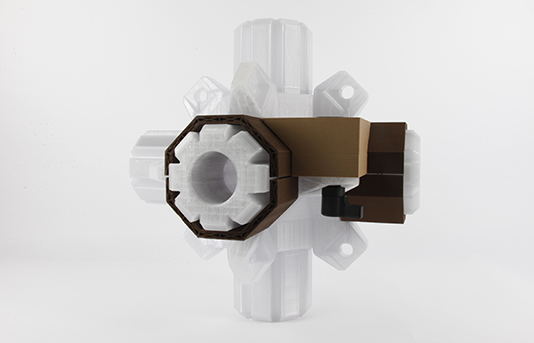About the MODUSHELTER project
Disaster response
Disaster issues caused by nature or war are affecting people all over the world and can occur at any time. One significant and frequently occurring result of disasters is that a large proportion of the local population are displaced, losing their homes under terrible circumstances.
The MODUSHELTER research project is focused on a resolution to this current worldwide issue, and proposes the creation of sustainable shelters for refugee camps that improves the living conditions of inhabitants in the camps.
Improving living conditions
Shelters play an important role in protecting people from the elements as well as supporting the recreation of communities, which is recognised as a key factor in improving the personal well being of refugees who have lost everything. The use of tents as a first response in shelter provision following a disastrous occurrence is still considered to be the most effective solution for the very short term. However, it is crucial to develop a solution for the medium and long term, before the displaced population is able to move back into traditional housing.
The project has been designed as a solution for this transition period between tents and housing, which can last for several years. Large “tent cities” are currently growing as refugees flee disaster areas and frequently result in very poor living conditions. Numerous issues such as extreme temperatures, lack of hygiene or contagious illnesses affect the refugees who require a proper habitat during the transition period.
The aim of the MODUSHELTER research project is to design a modular and efficient construction system to build temporary habitats combining sustainable materials and 3D printing technologies in order to improve living standards in emergency situations.
Modularity of the design
The proposition is that the modular nature of the design will result in the ability to create singular units that offer suitable shelter, with the possibility to evolve them into compounds of several houses, as required. The flexibility of the system also able to generate other types of constructions such as sanitation facilities, schools, common rooms, places of worship, … The MODUSHELTER will be to transportable, easily modifiable to accommodate the users’ needs, adaptable to a sudden change of situation as well as upgradable to a higher standard. Emergency shelters are often unsustainable in terms of costs and environmental issues as they are made to be temporary. This new construction system is aiming to combine efficiency and sustainability to produce a shelter that can evolve with the user.

Manufacturing process
The MODSHELTER construction system is composed of three main elements which are connectors, beams and panels being entirely manufactured using large-scale 3D printers. The manufacturing will occur in an existing airplane hangar close to the disaster area, facilitating the supply of sustainable building materials and transport of ready-made units. Alternatively, all parts could be manufactured in advance and stored as self containing units ready to be shipped as a first response to disasters.
Transport and assembly
The lightweight, quality components can be reassembled in the shape of containers to be ideally transported by large drones so they can be dropped into areas as needed. The container boxes are intended to be opened and assembled by the refugees themselves who would be using simple instruction leaflets similar to what comes with furniture from IKEA, and there will also be space inside of them to transport food, water and first-aid kits.
Being fully modular the MODUSHELTER have the capability to be easily disassembled and transported to a new area in case of a sudden change of situation or dismantlement of the refugee camp and can be reused for a new purpose when villages have been reconstructed. This modular system does not require any tools, only minimal effort from three people who will lock pieces into place by tightening them using a quick release system similar to those found on bicycle wheels. Due to the easy manipulations, refugees or those inhabiting the homes can have input into their exact needs as well as upgrading later. It is hoped that the versatility of the design will enable refugees to be creative, and provide them with some ownership of their habitat and regain dignity in a very tough situation.
